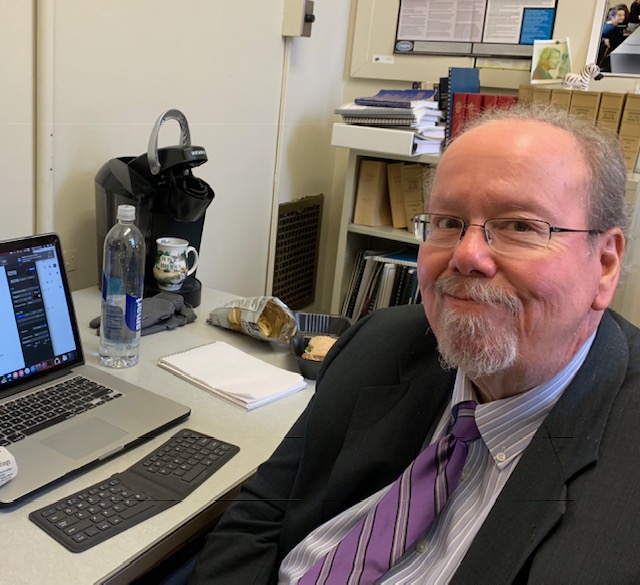
By GARRY RAYNO, Distant Dome
Winter is fading and summer is waiting.
Winter was mild with little snow this year until April, and last summer was the hottest on record.
The ocean temperatures in the Gulf of Maine last summer were the warmest they have ever been, which is great for swimming at usually cold Hampton Beach, but not so great for the climate.
New England, like most of the developed world, is in the midst of developing strategies for reducing the fossil fuel emissions driving climate change.
The push for electric vehicles and for heating buildings with electricity instead of fossil fuels also spikes the demand for power.
Today in New England the vast majority of electricity is generated by burning natural gas, while far less harmful than coal or oil, it is a fossil fuel and a global hot commodity, especially liquified natural gas which New England relies on to produce electricity in the winter when most of the natural gas supplies are allocated for home heating.
And that will be a growing problem in the near future according to the ISO New England, which manages the wholesale electric market for the region, as New Hampshire and other New England states return to a winter peak demand region in the mid 2030s instead of the current summer peak demand driven by air conditioning.
ISO-New England released its 2024 Regional Electricity Outlook last week and it paints a very complex, inter-related and arduous path for the region’s transition to renewable energy as the main source of power generation.
While most of New England has greatly expanded the use of renewable sources of power, New Hampshire on the tail end, much of it is “behind the meter” which means it is used where it is generated and never goes onto the grid.
The increase in solar — and to some extent wind — is enough to drive down demand significantly in the summer, which creates its own problems with day-ahead energy forecasts and the weather.
And the large wind and solar resources are reduced by the more extreme weather experienced the past few years.
The ISO also notes improved battery storage technology will be needed to increase capacity, but warns when it is needed most — in the winter when natural gas for producing electricity is scarce and expensive — is when it is least efficient.
And the most reliable and cheapest renewable energy resource for New England and New York has been hydro power from Hydro Quebec, which now faces pressure from the provincial government to retain its available resources to meet the growing demand at home driven by large users like Amazon and General Motors that were lured to the province by cheap electricity.
And Hydro Quebec is still under contract to provide 2,400 megawatts of power to two major Northeast projects under construction, Champlain Hudson Power Express and New England Clean Energy Connect through Maine for Massachusetts customers.
So the ISO warns that despite the push to end the burning of fossil fuels, the uncertainty of renewable resources today requires “some amount of flexible, dispatchable resources —whether they are carbon-emitting or not — will continue to play a role in filling supply gaps and ensuring the reliable flow of electricity.”
And the ISO urges all stakeholders to jump on the bandwagon, saying “At the same time, it is increasingly imperative for the energy industry, affected communities, and siting bodies and policymakers to overcome obstacles that have kept some projects from coming to fruition.”
Earlier this spring National Grid decided its Twin State Energy Link project was not feasible at this time.
The 1,200 megawatt transmission project running from Quebec through Vermont and New Hampshire largely in existing transmission corridors, would have been bi-directional allowing Hydro-Quebec power to flow to New England and anticipated wind power from Southern New England offshore wind farms to flow to Canada.
National Grid did not say why it pulled out, but the availability of Hydro-Quebec power is likely one reason, and the slow development of the proposed offshore wind projects is likely another reason. More utilities are pulling out of offshore projects than are jumping in right now.
The National Grid project had won US Department of Energy approval for transmission projects guaranteeing backstop purchases of power to ensure financing, and New England states are also seeking similar backing for two other projects, Power Up New England, and Clean Reliance Link.
Power Up New England would construct transmission lines to access wind farms in Northern Maine and offshore in Southern New England and battery systems for both, while Clean Reliance Link would be a transmission upgrade between New York and New England to share resources.
The wind farms in the north and south are also included in the ISO-New England’s long-term outlook for transitioning the New England grid to renewable resources along with additional Hydro-Quebec power.
Although the ISO does not have any authority over the transmission system, it notes in its 2024 outlook the need for billions of dollars of upgrades and new connections.
“Cumulative costs to upgrade the transmission system could reach $17 billion to reliably serve a 51 gigawatt peak in 2050, or $26 billion to support a 57 gigawatt peak,” ISO officials wrote. “To reach those levels, the region’s annual investment in transmission reliability projects over the next 26 years would need to roughly keep pace with or exceed the average spent each year over the past two decades.”
The organization estimates $620 million to $1 billion in transmission reliability investment is needed each year through 2050 to support the transmission to clean energy.
That is a significant amount of money and no sure thing.
A dispute with energy regulators in Connecticut has the region’s largest electric utility, Eversource, reducing its investment in the transmission system in that state by $500 million over the next five years.
The company believes state regulators have been slow to approve the recovery of $635 million in storm costs from 2018 to 2021, and $400 million in unpaid bills from customers, prompting Eversource’s CEO Joseph Nolan to say last week “Without a secure and predictable cost recovery path, we cannot continue to put additional capital resources on the table. So our investment objectives in Connecticut have been centered around safety and reliability. As you’d expect, we will not reduce our safety spending. Therefore the reduction will likely come from reliability areas.”
The path from today to a renewable energy grid has lots of landmines and is like threading a needle.
But as Eversource probably learned from the Northern Pass project, trying to thread an 8-inch transmission line through a 5-inch needle hole just doesn’t work.
Everything is going to have to line up in the right order and at the right time for New England to produce most of its electricity from renewable resources.
It’s complicated.
Garry Rayno may be reached at garry.rayno@yahoo.com.
Distant Dome by veteran journalist Garry Rayno explores a broader perspective on the State House and state happenings for InDepthNH.org. Over his three-decade career, Rayno covered the NH State House for the New Hampshire Union Leader and Foster’s Daily Democrat. During his career, his coverage spanned the news spectrum, from local planning, school and select boards, to national issues such as electric industry deregulation and Presidential primaries. Rayno lives with his wife Carolyn in New London.





